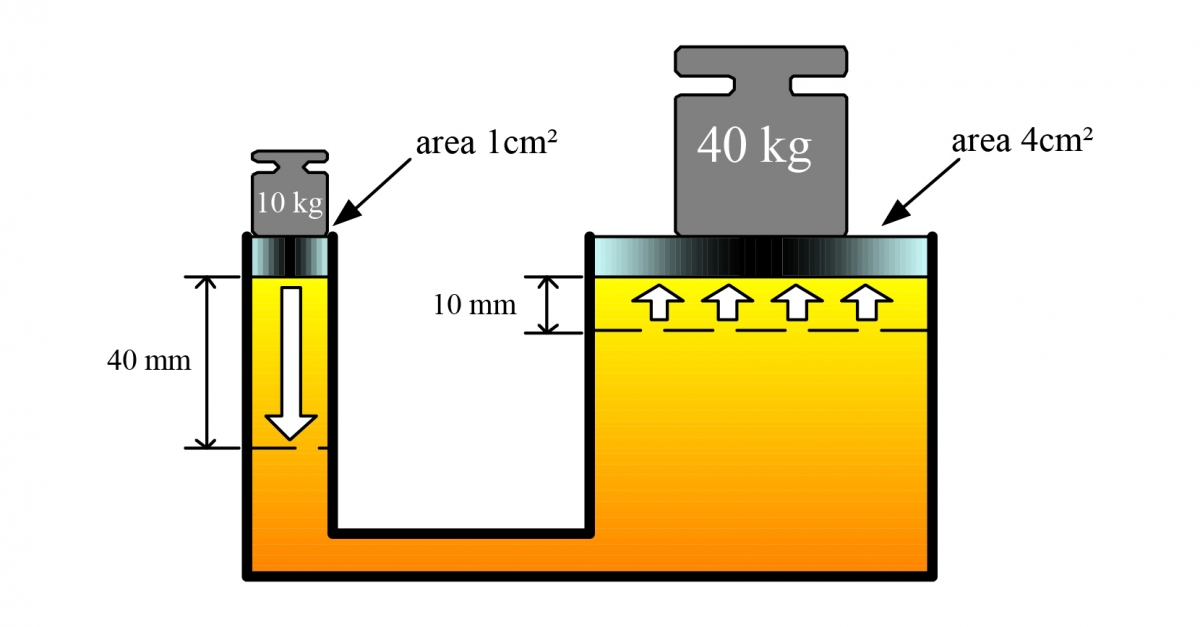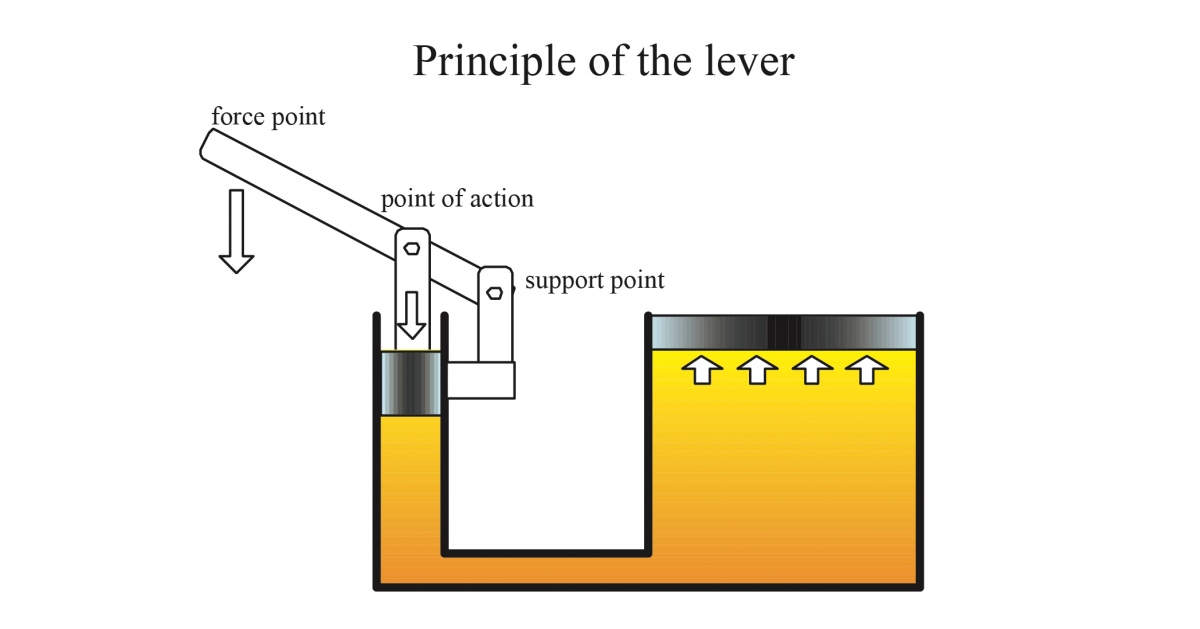EAGLE bits of knowledge – What is a hydraulic jack?
2021.06.14
A hydraulic jack is a device that turns a small force into a large force. A hydraulic jack works based on Pascal’s law and Principle of the lever.
- What is Pascal’s law?
Pascal’s law states that a certain external pressure in liquids in the closed container generated at one point is evenly distributed in all directions. By applying Pascal’s law, a small force can be converted into a large force. - What is Principle of the lever?
Principle of the lever is a principle that change a small force into a large force by using a lever (a rigid bar) - How hydraulic jacks work?
The area of a large cylinder is 4 times that of a small cylinder. A 10 kg weight on a small cylinder will hang with a 40 kg on a large cylinder. A small force increases in proportion to the cylinder area. Here, when the small piston is pushed in by 40 mm, the large piston only rises by 10 mm. It rises by the amount of oil supplied from the smaller cylinder. The amount of cylinder rise is inversely proportional to the area.
 As shown in figure below, the hydraulic jack is a tool that applies the “Lever Principle” of the pump and the “Pascal’s law” of hydraulic oil. By combining these two principles, it is possible to lift a large object with a small amount of human power.
As shown in figure below, the hydraulic jack is a tool that applies the “Lever Principle” of the pump and the “Pascal’s law” of hydraulic oil. By combining these two principles, it is possible to lift a large object with a small amount of human power.




